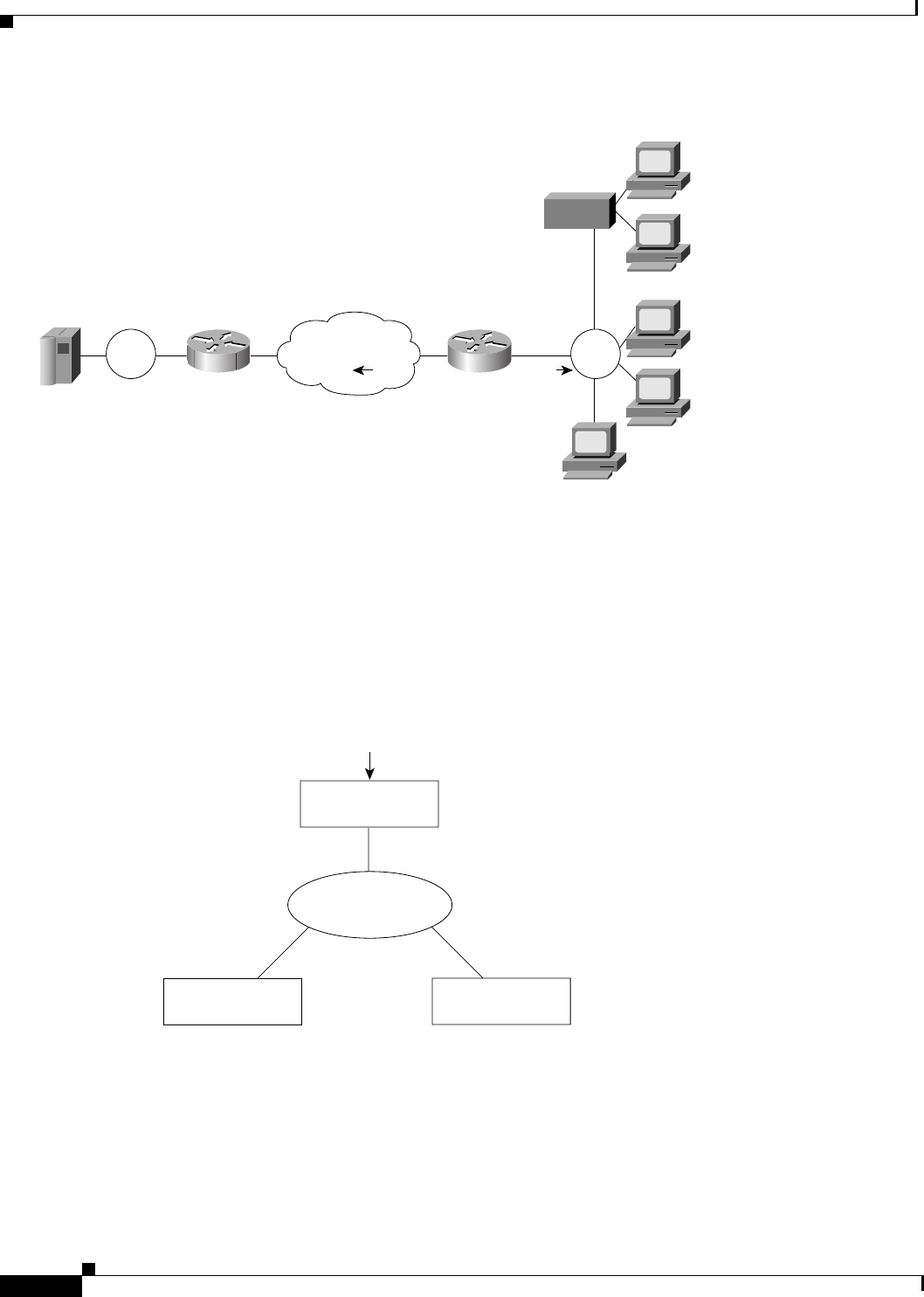Network Hardware User Manual
Table Of Contents
- Overview of IBM Networking
- RSRB
- DLSw+
- STUN and BSTUN
- LLC2 and SDLC Parameters
- IBM Network Media Translation
- SNA FRAS
- NCIA
- ALPS
- DSPU and SNA Service Point
- SNA Switching Services
- Benefits of SNASw
- HPR Capable SNA Routing Services
- Branch Extender
- Enterprise Extender (HPR/IP)
- Usability Features
- Management Enhancements
- LAN and IP-Focused Connection Types
- Cisco Transaction Connection
- CMCC Adapter Hardware
- CMCC Adapter Features for TCP/IP Environments
- CMCC Adapter Features for SNA Environments

Overview of IBM Networking
DSPU and SNA Service Point
BC-234
Cisco IOS Bridging and IBM Networking Configuration Guide
Figure 105 Router Acting as a DSPU Concentrator
Typically, a router establishes one or more upstream connections with one or more hosts and many
downstream connections with PU type 2 devices. From an SNA perspective, the router appears as a PU
type 2 device to the upstream host and assumes the role of a system services control point (SSCP)
appearing as a PU type 5 device to its downstream PUs.
The SSCP sessions established between the router and its upstream host are completely independent of
the SSCP sessions established between the router and its downstream PUs. SNA traffic is routed at a
logical unit (LU) level using a routing algorithm that maps downstream LUs onto upstream LUs.
Figure 106 illustrates the SNA perspective of DSPU.
Figure 106 SNA Perspective of DSPU
Token
Ring
RSRB
Mainframe
with 1 PU and
8 LUs defined
DSPU concentrator
supporting 4 PUs
and 8 LUs
LU
PU 2 + 2 LUs
S3223
Token
Ring
PU 2 + 1 LU
PU 2 + 3 LUs
LU
PU 2 PU 5
Upstream PU
(PU type 2)
LU routing algorithm
Downstream PU A
(PU type 5)
Downstream PU B
(PU type 5)
S3224










